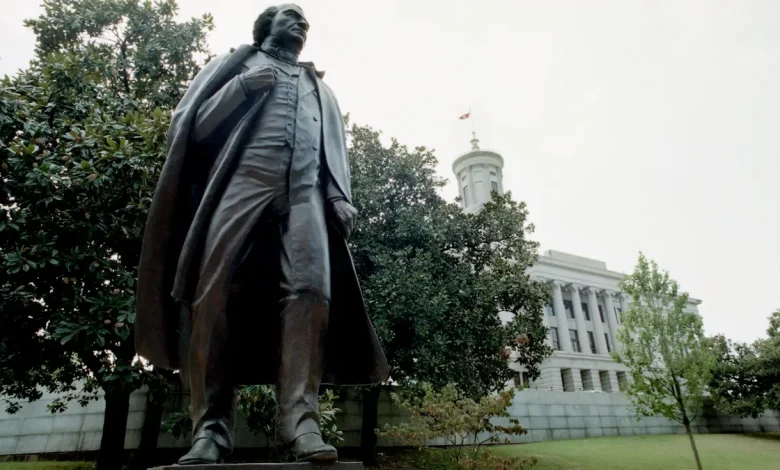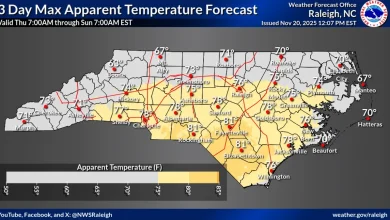The almost-forgotten Thanksgiving: a weird history of Thanksgiving proclamations

The Thanksgiving holiday, a staple of the waning autumn days and a herald of upcoming Christmas festivities, has stood as a pillar of American culture since before the country’s founding.
And in nearly every year since the country’s founding, the sitting president has taken on the mantle of “proclaiming” the national holiday.
But despite its importance to the American holiday lineup, Thanksgiving was almost completely forgotten one year by none other than President Andrew Johnson, Tennessee’s own, in 1865.
In Johnson’s defense, many things were occurring in 1865: the Civil War came to an end, slavery was abolished, and Johnson’s former running mate, President Abraham Lincoln, was assassinated, resulting in Johnson ascension to the presidency in mid-April.
These major events all led to a holiday season that was strangely quiet. Not a whisper of a proclamation, not a gobble of a turkey.
While Thanksgiving had not yet been officially placed on a specific yearly date, it was largely celebrated around November. So when November rolled around with no Thanksgiving declaration in sight, it is rumored, according the Library of Congress, that a church congregation wrote a letter to Johnson asking him to remember the holiday.
Following the letter, Johnson declared the holiday on Dec. 7, marking a rather late, but no less appreciated, Thanksgiving holiday for a war-torn country.
“The return of the closing year, fraught with innumerable blessings — not the least of which is “general peace,”—invites us again, with prayers and thanks, to acknowledge before the Author of them all our multiplied obligations for his loving kindness,” wrote Andrew Jackson Fletcher, Tennessee’s secretary of state at the time, in the Knoxville Weekly Whig. “Let all citizens of Tennessee adopt (Dec. 7), with solemnities usual and appropriate, giving praise to Almighty God that the conflict for which our country has been engaged during the four dreary years past has ended in heaven-borne peace.”
The chaotic timeline of Thanksgiving proclamations
Johnson’s forgetting of the holiday may seem shocking to readers today, given the holiday’s prominence, but prior to 1941 Thanksgiving was a floating holiday. Presidents from Washington to FDR shifted the date around to accommodate wars, economic hardship and more.
Washington was the first to issue a proclamation of the holiday in 1789, marking Thursday, November 26 as “a day of public thanksgiving.”
President John Adams declared only two Thanksgivings during his presidency — one on Wednesday, May 9, 1798, and Thursday, April 25, 1799.
President Thomas Jefferson actually refused to issue a proclamation for Thanksgiving in 1801, as in his words, proclaiming the holiday was akin to supporting a state-sponsored religious activity—something he explicitly opposed thanks to the recently ratified First Amendment.
In a draft letter to a Baptist group in Connecticut, Jefferson contemplated the lengths at which a government could declare religious events. The famous letter, written to the Danbury Baptists, became a pillar of First Amendment law and the basis of many legal arguments about the separation of church and state today.
President James Madison did not feel such reservations or adherence to autumnal festivities, however. Just a few years later, he proclaimed the day of Thanksgiving to be held on September 9, 1813 and March 16, 1815.
Those who do prefer their Thanksgiving feast be in the fall can thank Sarah Josepha Hale, a prominent editor of the Ladies Magazine and Godey’s Lady’s Book, which were popular women’s publications in the 1800s.
According to the Library of Congress, Hale began pushing for a solidified Thanksgiving date in 1827 by printing articles and recipes in her magazines, along with “scores of letters to governors, senators, and presidents.”
After 36 years of determination and persistent publication — as well as five presidents targeted by her efforts — Hale won her festive fight.
On the heels of the Union victory at the Battle of Gettysburg, Lincoln declared Nov. 26 would be a national Thanksgiving Day, with direction that it was to be celebrated every year on the fourth Thursday of November.
Since then, the observation date has only been changed twice, both by President Franklin Roosevelt.
In the throws of the Great Depression, Roosevelt moved Thanksgiving to the third Thursday of November in 1939 and 1940 in order to give stores and merchants more time to sell ahead of Christmas.
However, in contrast to Johnson’s nearly forgotten Thanksgiving that occurred at the end of a civil war, Roosevelt’s decision nearly started a second one.
According to the Library of Congress. he was called a “tradition-defier” in the press, and some states even decided to celebrate Thanksgiving on Nov. 30 anyway, resulting in mixed up holiday schedules for thousands of Americans.
In an article titled “Man Who Wanted Thanksgiving Changed to Eat Two Turkeys,” published in a Nov. 23, 1939 edition of the Skyland Post, Roosevelt states that he was “quite unprepared for the storm it kicked up.”
“It looked to me for a while as if New England would secede from the union,” he said.
Although Thanksgiving returned to its original setting of the last Thursday of the month for the next two years, the outrage clearly left its mark: in 1941, Congress passed a law making the fourth Thursday of November the legal holiday date of Thanksgiving to ensure the chaos never occurred again.
The USA TODAY Network – The South region’s coverage of First Amendment issues is funded through a collaboration between the Freedom Forum and Journalism Funding Partners.
Have a story to tell? Reach Angele Latham by email at alatham@gannett.com, or follow her on Twitter at @angele_latham





